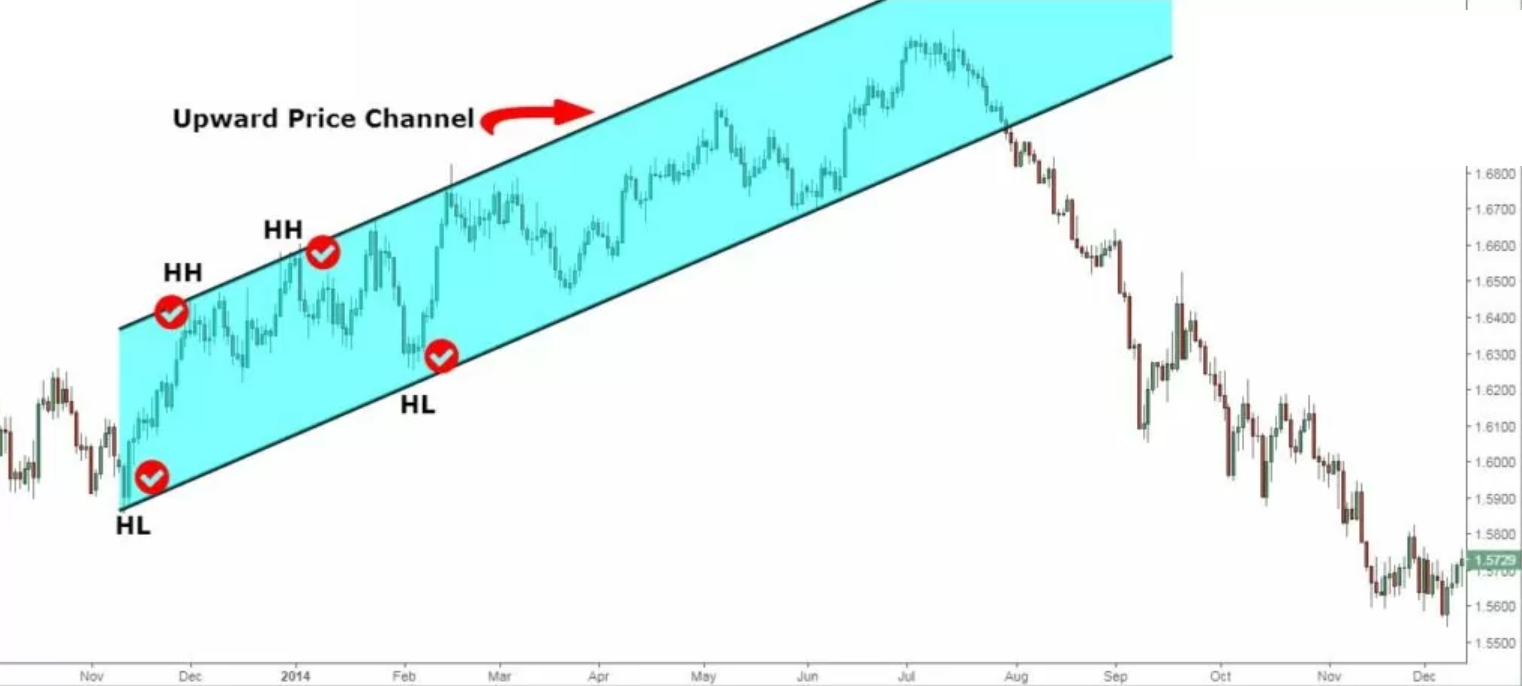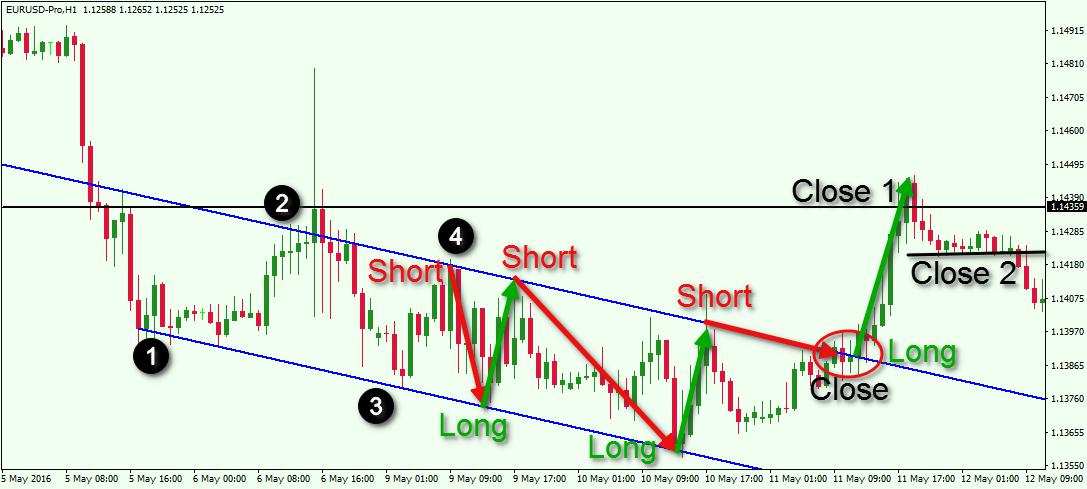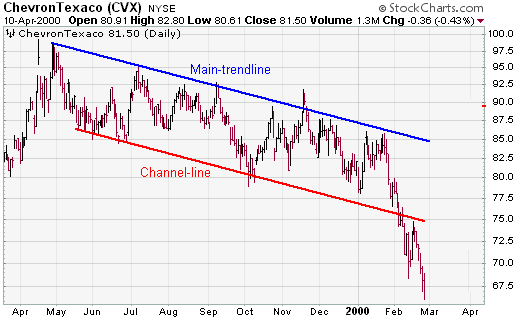Channels
Upward Channels
The observation here is that the swing highs and lows are successively larger.
Think of it as the peak of the competition between Longers and Shorters.
Longers buy stock to increase the price causing higher swigns. In response, shorters sell stock to reduce price causing the low swings.
When the price goes above the line of the swing highs (upper blue lines in image below), the shorters know they lost and would have to buy the stock back to avoid losing money. This will result in many people trying to buy, which will push the price up.

Figure 4.1: Channel
If the price of a stock moves below the line defined by the lower swigns (lower black line in image below), then the longers know they lost and would have to sell their shares to avoid loosing money from a falling price. The excess of shares will cause the price of the stock to go down even more.

Figure 4.2: Channel downtrend
Downward Channels
Channels can also occur in declining trends.
Here shorters try to bring the price down by selling shares, and in response longers buy stock to increase the price.
If the price of a stock moves above the line of the swign highs (upper blue line in image below), the shorters know they lost, and would have to buy stock to avoid losing more money. The excess of people buying will cuase the price to go up.

Figure 4.3: Channel downtrend
If the price of the stock breaks below the lower line of the channel, then there is a risk for the price to break lower. The shorters won.

Figure 4.4: Channel downtrend